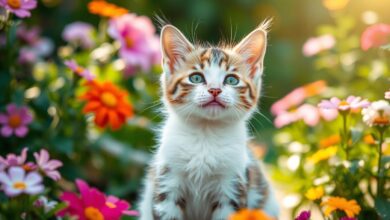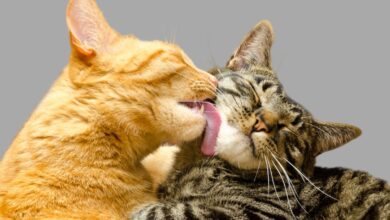How to Create a Bird-Friendly Garden: A Haven for Your Feathered Friends
Building a bird-friendly garden not only adds beauty to your outdoor space but also provides a sanctuary for local bird species. Whether you’re looking to attract more birds to your garden or provide them with a safe environment, creating a bird-friendly space can help support bird populations and enhance your garden’s ecosystem. In this guide, we’ll cover practical tips to make your garden inviting for birds while maintaining a lush and vibrant landscape.
1. Provide a Variety of Native Plants
One of the best ways to attract birds to your garden is by planting native species. Native plants are naturally suited to your region’s climate and environment, providing food and shelter for local birds.
- Why Native Plants Matter: Native plants offer birds the berries, seeds, nectar, and insects they need. Since these plants have evolved alongside the local wildlife, they are more likely to meet the needs of birds in your area.
- Plant Diversity: Include a mix of trees, shrubs, and flowering plants to create layers of vegetation, which mimic natural habitats and offer nesting sites and protection.
Some examples of bird-friendly native plants include:
- Berry bushes like elderberries, dogwoods, or serviceberries
- Seed-producing flowers like sunflowers, coneflowers, and goldenrods
- Nectar-rich flowers like trumpet vines and bee balm for attracting hummingbirds
2. Offer Fresh Water Sources
Birds need water for both drinking and bathing, and providing a consistent water source is a great way to attract more birds to your garden.
- Bird Baths: A shallow bird bath with a depth of 1-2 inches is perfect for small birds. Make sure to clean it regularly to prevent algae buildup and mosquito breeding.
- Water Features: If you have the space, adding a pond or small fountain can offer birds a fresh and moving water source, which tends to attract more species than stagnant water.
- Winter Water: In colder climates, consider adding a heated bird bath or de-icer to prevent the water from freezing, ensuring birds have access to water year-round.
3. Provide Bird Feeders for Extra Nutrition
While native plants can supply much of the food birds need, supplementing with bird feeders ensures a steady supply of food, especially during the colder months or times when food is scarce.
- Types of Feeders: Different feeders cater to different bird species. Tube feeders are great for small birds like finches, while platform feeders attract a wider variety of birds. Suet feeders are perfect for woodpeckers and other insect-eating birds.
- Best Bird Foods: Fill your feeders with high-quality bird food such as black oil sunflower seeds, nyjer seeds, suet cakes, and peanuts. These foods provide the nutrition birds need, especially in winter.
- Placement: Place feeders in safe spots, away from predators like cats, and near cover such as trees or shrubs so birds can quickly seek shelter if needed.
4. Create Safe Nesting and Roosting Sites
Birds need safe places to nest and roost, especially during breeding seasons. Creating nesting opportunities will help encourage birds to settle in your garden.
- Birdhouses: Install birdhouses tailored to the species you want to attract. For instance, small houses with small entrance holes are perfect for wrens or chickadees, while larger boxes suit owls or woodpeckers.
- Natural Nesting Sites: In addition to birdhouses, leave dead trees (if safe) standing, as many birds, including woodpeckers, use these for nesting.
- Shrubs and Dense Plants: Dense foliage and thickets offer excellent shelter for birds, providing protection from predators and harsh weather conditions.
5. Avoid Pesticides and Harmful Chemicals
Using pesticides and herbicides can harm birds directly or reduce the insect population, which many birds rely on for food. To make your garden bird-friendly:
- Natural Pest Control: Encourage natural pest control by attracting insect-eating birds like swallows and chickadees, which will help keep insect populations in check.
- Organic Gardening: Use organic gardening practices, such as composting, crop rotation, and natural fertilizers, to keep your garden lush without using harmful chemicals.
6. Offer Shelter from Predators
Birds need safe spaces to hide from predators such as cats, hawks, or even raccoons. Providing adequate shelter and safety features can make your garden a more appealing place for birds.
- Dense Shrubs and Trees: Planting thick bushes and small trees offers birds quick escape routes from predators. Thorny bushes like holly or blackberry provide extra protection.
- Fencing and Barriers: If outdoor cats frequent your garden, consider installing cat-proof fencing or use motion-activated sprinklers to discourage them from approaching bird feeders or nests.
7. Reduce Window Collisions
Millions of birds die each year from collisions with windows. To make your bird-friendly garden safer, take steps to prevent these accidents.
- Window Decals: Applying decals, tapes, or films to windows can help birds recognize them as solid surfaces, reducing the risk of collisions.
- Placement of Feeders: Place bird feeders either very close (within 3 feet) or far from windows (more than 30 feet) to reduce the risk of birds flying into glass.
8. Leave Some Leaf Litter
Leaf litter on the ground may not be the tidiest look for a garden, but it serves as an important resource for birds.
- Insects and Foraging: Many birds forage through leaf litter for insects, worms, and other food sources, especially during the fall and winter when other food sources are scarce.
- Natural Materials for Nests: Birds also use leaves, twigs, and grass to build their nests, so leaving some natural debris can help during nesting season.
Conclusion
Creating a bird-friendly garden is a wonderful way to support local wildlife while enjoying the beauty and activity that birds bring to your outdoor space. By incorporating native plants, providing fresh water, setting up feeders, and ensuring your garden is free from harmful chemicals, you can create a safe and nourishing environment for birds to thrive. Not only will your garden become a haven for birds, but it will also enrich your own connection with nature.





